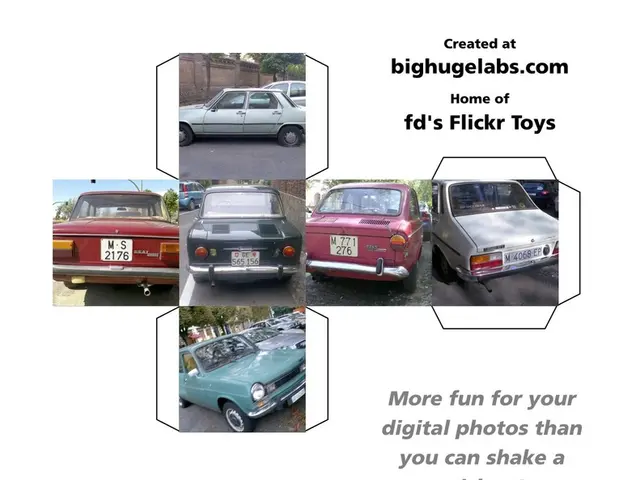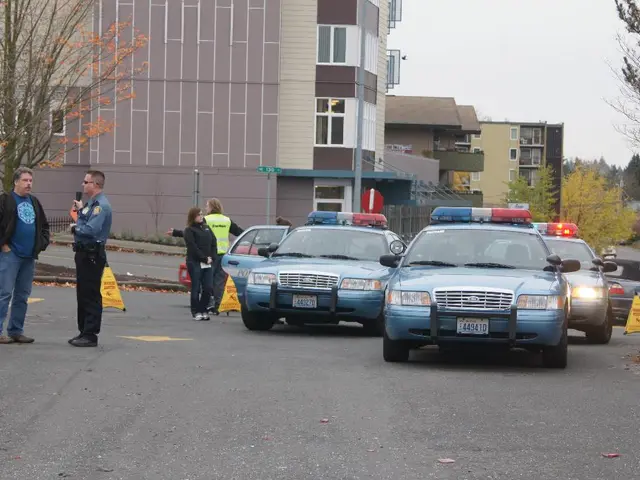If you feel drowsy while driving, here are some suggestions: - Strategies to cope when drowsiness strikes during driving:
Let's face it, we've all been there: eyelids getting heavy, the road ahead becoming a blur, and next thing you know, you're waking up at the wheel. The consequence of falling asleep behind the wheel can be catastrophic, causing accidents and even fatalities.
Just last week, a minibus carrying nine passengers swerved off the A48 near Koblenz, resulting in three deaths and six injuries. The law enforcement suspects driver fatigue as the potential cause.
To keep the road safe for yourself and others, it's crucial to know the signs of drowsiness, take the necessary breaks, and understand how modern vehicles can support you.
Recognizing the Signs of Drowsy Driving
Often, it's a matter of spotting the warning signs early to prevent a dangerous situation from arising. These include:
- Frequent yawning or blinking
- Drifting from lanes
- Hitting rumble strips
- Forgetting recent stretches of road
- Difficulty keeping eyes open
If you notice any of these, it's time to pull over and rest.
Taking Strategic Breaks
Regular breaks are essential for maintaining alertness and focus. Here are some tips to make the most out of your rest:
- Prioritize sleep: Ensure you get 7-8 hours of sleep before a long drive.
- Take hourly breaks: If that's not possible, at least take a short break every two hours or 100 miles.
- Stay hydrated: Drink plenty of water to prevent dehydration, which can lead to feeling drowsy.
- Avoid caffeine and sugar: Steer clear of energy drinks and coffee, as they only provide a temporary energy boost and can interfere with your sleep later.
Employer Obligations
Employers can do their part to improve safety by providing training on fatigue management, monitoring driving hours, and promoting open communication with dispatch to make real-time schedule adjustments.
Tech to Your Rescue
Modern cars are equipped with various assistive technologies to help drivers remain alert and prevent accidents. Some examples include:
- Lane Departure Warning Systems: These alert drivers when their vehicle drifts out of its lane.
- Collision Avoidance Systems: These warn of potential collisions and, in some cases, can even apply brakes autonomously.
- Driver Monitoring Systems: These use cameras and sensors to detect signs of drowsiness and alert the driver.
- Adaptive Cruise Control: This maintains a safe distance from the car ahead, reducing cognitive load on the driver.
By recognizing the signs of drowsiness, taking strategic breaks, and utilizing modern assistive technologies, drivers can significantly reduce their risk of falling asleep at the wheel. Both professional drivers and everyday commuters stand to benefit from these strategies.
In the realm of better road safety and fatigue management, businesses have a role to play by offering vocational training on this subject, monitoring driving hours, and promoting open communication with dispatch for real-time schedule adjustments. Employees, especially professional drivers, should recognize the significance of such training and see it as a part of their health-and-wellness, as much as fitness-and-exercise and general-news are relevant to their well-being. Meanwhile, modern vehicles, equipped with technology like Lane Departure Warning Systems, Collision Avoidance Systems, Driver Monitoring Systems, and Adaptive Cruise Control, can act as allies, helping to prevent drowsy driving, accidents, and the potential catastrophes associated with them. Science and technology, in combination with a good community policy, can help steer clear of tired driving mishaps.








